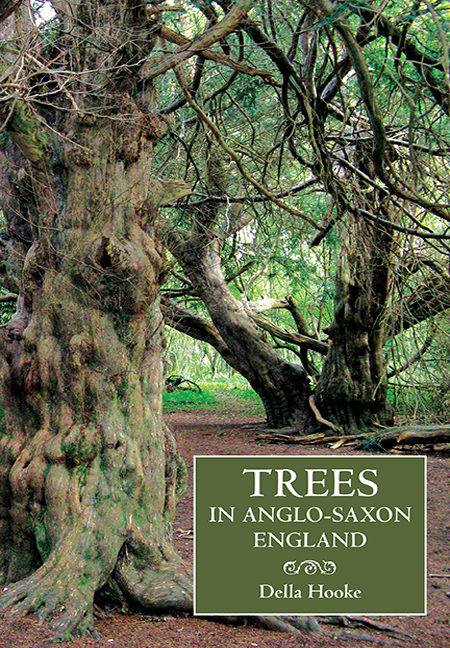Book contents
- Frontmatter
- Contents
- List of Illustrations and Tables
- Preface and Acknowledgements
- List of Abbreviations
- PART I Tree Symbolism
- Chapter 1 Trees and Groves in Pre-Christian Belief
- Chapter 2 Christianity and the Sacred Tree
- Chapter 3 Trees in Literature
- Chapter 4 Trees, Mythology and National Consciousness: into the Future
- PART II Trees and Woodland in the Anglo-Saxon Landscape
- PART III Individual Tree Species in Anglo-Saxon England
- Epilogue
- Bibliography
- Index
- Anglo-Saxon Studies
Chapter 1 - Trees and Groves in Pre-Christian Belief
from PART I - Tree Symbolism
Published online by Cambridge University Press: 09 May 2017
- Frontmatter
- Contents
- List of Illustrations and Tables
- Preface and Acknowledgements
- List of Abbreviations
- PART I Tree Symbolism
- Chapter 1 Trees and Groves in Pre-Christian Belief
- Chapter 2 Christianity and the Sacred Tree
- Chapter 3 Trees in Literature
- Chapter 4 Trees, Mythology and National Consciousness: into the Future
- PART II Trees and Woodland in the Anglo-Saxon Landscape
- PART III Individual Tree Species in Anglo-Saxon England
- Epilogue
- Bibliography
- Index
- Anglo-Saxon Studies
Summary
Life, death and rebirth – these are all aspects of the symbolism attached to the tree, and are united in much mythological tradition. ‘The symbolism of trees is complex: their roots and branches evoked an image of a link between sky and Underworld; their longevity represented continuity and wisdom; the seasonal behaviour of deciduous trees gave rise to a cyclical symbolism, an allegory of life, death and rebirth.’ Some early European traditions envisaged a World Tree, called in Norse mythology askr Yggdrasill, ‘the ash-tree Yggdrasill’, a steed (drasill) on which the god Óðinn (also called Yggr) was thought to have hung in voluntary sacrifice in order to acquire hidden knowledge and wisdom: by undergoing ritualistic death he learned the secret of the runes. Christianity substituted a wooden cross for the living tree, but through death Christians believe that Christ suffered for all and gained redemption for all. The World Tree linked the underworld to the heavens and the gods to mankind, the dead to the living – it was, indeed, the backbone of all worlds, an idea met with in a number of ancient religions from across the world. Such ideas must be very ancient. Only a few years ago, coastal erosion on the east coast of Norfolk near Holme-next-the-Sea uncovered a great upturned tree which had been deliberately set with its roots upwards some 4,000 years ago – an oak-tree uprooted in the spring of 2049 BC, just as it would have been bursting into life. This Bronze Age upturned oak in Norfolk may have been a mortuary table to hold the dead but it was enclosed within an oval-shaped stockade of split poles that still carried their bark on the outer side, producing the image of yet another great tree some 6.7 metres (22ft) in diameter and perhaps 3½ metres (12ft) high. Was the central upturned tree reaching down into a perceived underworld, perhaps attempting to unite the world of men with a hidden realm? Was it, as Francis Pryor, an archaeologist closely linked to the lifting operation carried out by English Heritage, believes, an attempt to transfer life from this plane to a parallel, upside-down universe: ‘a living organism of this world … being offered to the world below the ground, which was possibly seen as the source of all life’? One is also reminded of the Katha Upanishad, one of the Hindu Veda texts written between 600 and 300 BC.
- Type
- Chapter
- Information
- Trees in Anglo-Saxon EnglandLiterature, Lore and Landscape, pp. 3 - 20Publisher: Boydell & BrewerPrint publication year: 2011



